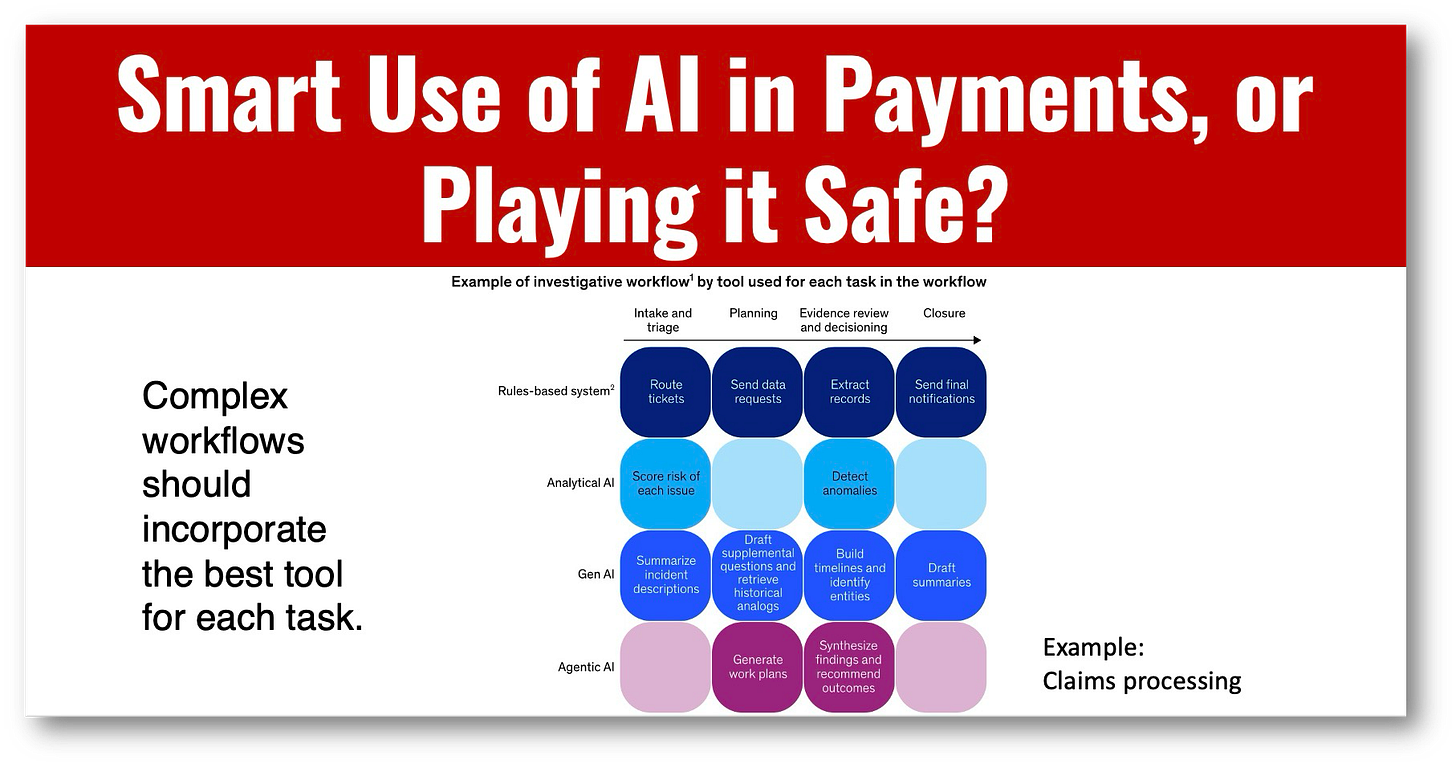This is my daily post. I write daily but send my newsletter to your email only on Sundays. Go HERE to see my past newsletters.
Following a year working with Agentic AI, a team at McKinsey produced a masterpiece of simplicity on how to get a difficult task right.
And the number one problem? People are focusing on the AI agent and its tech rather than focusing on the workflow and people, which are far more critical.
This makes sense, and I call out this behavior in my book “Innovation Lab Excellence.” I state that:
"Innovation teams find it far easier to focus on technology than to work with business units."
"It is simply the path of least resistance."
This shouldn’t be a surprise that this applies to agentics because love of technology seems hard-coded into humans, once again from my book:
“Why do we consistently fall for the message that tech will solve our problems? In short, because we all wish it would work as advertised. Systems are easier to deal with than people, so at some level, we are victims of our own desire for a magical outcome.”
While McKinsey’s other five lessons are important and a great read, it amuses me that, for all of our tech advances, we still fall for the message that tech solves all.
We are still like children, focusing on the shiny new toy and not the work at hand!
👉Six Lessons on Agentic AI
1️⃣ It’s not about the agent; it’s about the workflow
Achieving business value with agentic AI requires changing workflows. Often, however, organizations focus too much on the agent or the agentic tool. This inevitably leads to great-looking agents that don’t actually end up improving the overall workflow, resulting in underwhelming value.
2️⃣ Agents aren’t always the answer
AI agents can do a lot, but they shouldn’t necessarily be used for everything. Too often, leaders don’t look closely enough at the work that needs to be done or ask whether an agent would be the best choice to perform that work.
3️⃣ Stop ‘AI slop’: Invest in evaluations and build trust with users
One of the most common pitfalls teams encounter when deploying AI agents is agentic systems that seem impressive in demos but frustrate users who are actually responsible for the work. It’s common to hear users complain about “AI slop” or low-quality outputs.
4️⃣ Make it easy to track and verify every step
When working with only a few AI agents, reviewing their work and spotting errors can be mostly straightforward. But as companies roll out hundreds, or even thousands, of agents, the task becomes challenging. Agent performance should be verified at each step of the workflow by building monitoring and evaluation into the workflow.
5️⃣ The best use case is the reuse case
In the rush to make progress with agentic AI, companies often create a unique agent for each identified task. This can lead to significant redundancy and waste because the same agent can often accomplish different tasks that share many of the same actions (such as ingesting, extracting, searching, and analyzing).
6️⃣ Humans remain essential, but their roles and numbers will change
As AI agents continue to proliferate, the question of what role humans will play has generated much anxiety—about job security, on the one hand, and about high expectations for productivity increases, on the other. This has led to wildly diverging views on the role of humans in many present-day jobs.
To be clear: Agents will be able to accomplish a lot, but humans will remain an essential part of the workforce equation even as the type of work that both agents and humans do changes over time. People will need to oversee model accuracy, ensure compliance, use judgment, and handle edge cases, for example.
HAND CURATED FOR YOU
🚀 Every week I scan thousands of articles to find only the best and most valuable for you. Subscribe to get my expertly curated news straight to your inbox each week. Free is good but paid is better.



